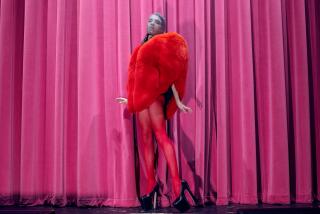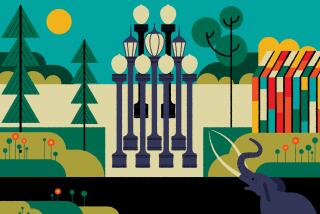Three excellent, less-crowded-than-the-Louvre Paris museums to explore
Despite what the song says, winter isn’t the only time it drizzles in Paris. On average, you can expect rain at least one of every three days in the City of Light — and not so light rain, at that.
The savvy traveler needs a contingency plan when it’s too wet to wander. One solution: ducking into one of the more than 150 museums here.
Brilliant idea, except that thousands of others will think of it too. But while they swarm the Louvre, the Pompidou Centre and the Musée d’Orsay, you will head to the city’s lesser-known museums, where you’ll find equally spectacular treasures but without the long lines.
MORE: Visiting Ernest Hemingway’s Paris | Impressions of Monet’s Giverny | How to get there
Here are three of my picks from a recent trip.
Musée Jacquemart-André
Jacquemart-André was once a grand private home that still feels like a stately 19th century mansion, although when it’s wet, it appears a bit foreboding. Rain will do that.
Step inside, though, and it’s surprisingly bright, with large windows, a glass rooftop and cheery staffers dispensing audio tour headphones.
You’ll want those headphones to navigate the rooms, which are a startling combination of art gallery and lavishly decorated home.
The museum takes its name from the couple who lived in the onetime mansion and collected a variety of objects, from ceramics and jewelry to Rembrandts and Botticellis.
Banker aristocrat Edouard André and his artist wife, Nélie Jacquemart, married in 1881 and acquired vast numbers of paintings, furnishings, tapestries, sculptures and antiques on their European travels. Today, they might be described as hoarders with exquisite taste and seemingly unlimited bank accounts; they modified their house to accommodate the new buys. Edouard died in 1894, and Nélie, as planned, donated the mansion and collection to the Institute de France.
Don’t miss:
— The audio tour. It’s conducted as if the visitor were a guest during the era when the couple entertained. You begin in the Picture Gallery, where guests were invited to gaze upon the 18th century paintings dotting the walls before being ushered into the adjoining Grand Salon, a reception room of white and gold with marble busts and rich décor.
— The Italian Museum. The second floor of the home was reserved for special guests of the owners, who turned about half the space into three galleries of Italian art specialties.
— The Winter Garden. This strangely modern space doesn’t seem as though it fits with the rest of the house. The Winter Garden is light and airy, thanks to a glass roof that brightens the area and nurtures the many large plants.
— The Tea Room, now the Café Jacquemart-André, is the mansion’s former formal dining room, a little fussy but divine. The tables on the covered outdoor veranda overlook a manicured garden. The lunch menu features salads, quiche and light fare; pastries are served in the afternoon. We had a slice of Napoleon with “JA” monogrammed in cocoa powder on top.
Info: 158 Boulevard Haussmann, 8th arrondissement, https://www.musee-jacquemart-andre.com/en/home. Admission is 15 euros ($16.32); the audio tour costs 3 euros ($3.28) more.
Musée Guimet
The Guimet is known for its outstanding collection of Khmer art, though this wasn’t one of my top choices. But Maureen Fan, one of my traveling companions, had recently returned from Cambodia and wanted to see more of the magnificent Khmer stone carvings, sculptures and Wat murals housed here.
I was intrigued mostly that Mata Hari debuted her risqué dance act in the library of the Guimet. (She was purportedly the mistress of founder Émile Étienne Guimet, a wealthy industrialist who collected treasures and artifacts from Asia and the Middle East and brought them back to France in the late 1800s.)
The French government acquired the museum in 1928 and has since transferred many Asian treasures from the Louvre and other national museums to the Guimet, making its holdings even richer.
Don’t miss:
— The Floor of Giants, where visitors are dwarfed by the massive sculptures and murals from the 12th century Preah Khan temple, northeast of Cambodia’s Angkor Thom. Some of the pieces, designed to be outdoors, are more than four stories tall.
— The scale 1/100 replica of the Bayon temple of Angkor Thom as it might appear from a plane. Stare at it awhile to understand the size of that Cambodian temple.
— The Afghanistan-Pakistan Collection: Given the continuing destruction of archaeological sites in this region, it’s a poignant display of objects dating as far back as the 1st century and includes art of empires long gone, excavated from places such as Hadda, Afghanistan.
Info: 6 Place d’Iéna, 16th arrondissement; https://www.guimet.fr. Admission: 7.50 euros, ($8.15), for permanent collections; 9.50 euros ($10.34), which includes entry to the special exhibits.
Carnavalet Museum
The Carnavalet is devoted to the history of Paris from its early settlement, through the French Revolution and to the present day. Nothing quite captures the Paris of our imagination as the streets of the Marais district, where aristocrats and displaced peasants walked along many of the same paths tourists wander today.
The museum is housed in two gracious buildings: The original is in a mansion built in 1548 that later became the home of revered French writer Madame de Sévigné. A gallery in the museum is devoted to her and the letters she wrote that bring to life the Marais of the 1600s.
In 1989, the Hôtel le Peletier next door was added, and its second floor is focused on the French Revolution.
Don’t miss:
— A collection of archaeological finds from the pre-Paris Neolithic era, including fishing boats used on the Seine from as early as 4400 BC.
— A tiny diorama that depicts the scene of Marie Antoinette’s beheading at what is now Place de la Concorde.
— The rooms and halls devoted to the king, queen, politicians and events surrounding the revolution. The museum brings the era to life in paintings, re-created period rooms and personal belongings from the players.
— The gift shop. The Carnavalet has one of the best museum souvenir shops in Paris, stocked with art and history books, along with knickknacks such as nail files decorated with images of Marie Antoinette in various dresses.
Info: 16 Rue des Francs-Bourgeois, 3rd arrondissement, https://www.lat.ms/1LNYN4T. Admission is free; audio guides in English, French or Spanish are 5 euros, about $5.45.
More to Read
Sign up for The Wild
We’ll help you find the best places to hike, bike and run, as well as the perfect silent spots for meditation and yoga.
You may occasionally receive promotional content from the Los Angeles Times.






